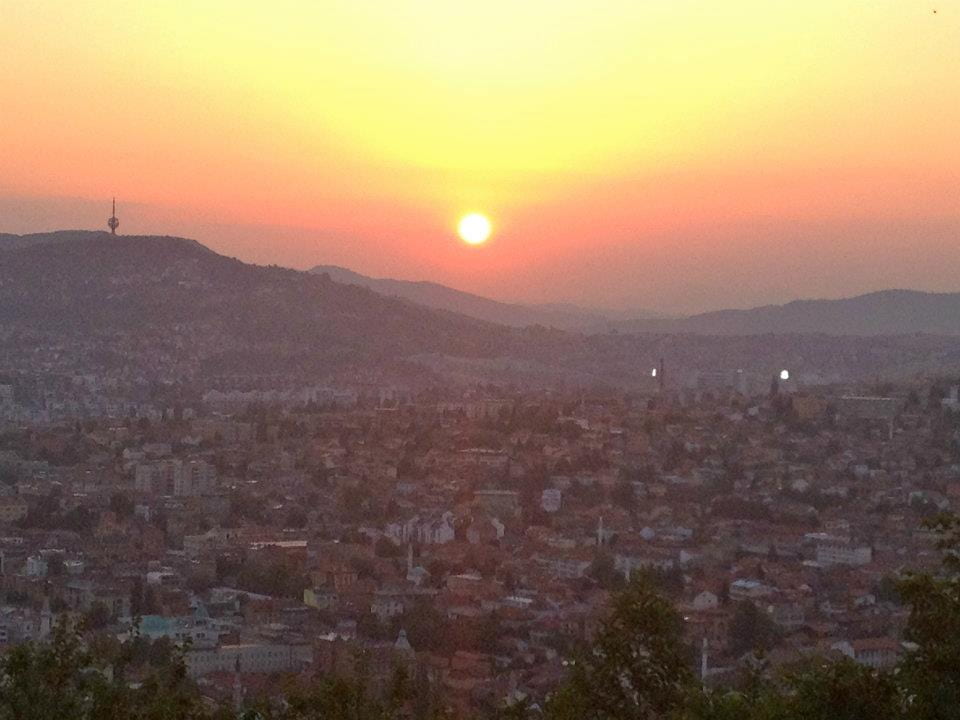Nadiya Kostyuk
Ukraine
Berezne District Central Administration
Having read the posts of my Gallatin Fellows, I decided to start my story about what I had been doing in June as it is related to the issues my fellows raised in their posts.
As a master student at the Center for Global Affairs of New York University, I took two field intensive courses during this summer. I spent about a week at the United Nations in Geneva, attending the briefing and sessions (one of them was the open session of the Human Rights Council), and enjoying the beauty of the city and lake Geneva. Then, I took a flight to Amsterdam and was ready to start my second class on War Crime and the Prosecution of War Criminals in the former Yugoslavia. In The Hague, I visited the International Criminal Court (ICC) and the International Criminal Tribunal for the former Yugoslavia (ICTY). In both organizations, we spoke with the Office of the Prosecutor as well as watched the trials (unfortunately for me, Mladic’s trial was reschedule for the month of July and I was only able to watch Haradinaj case, who is a former leader of the Kosovo Liberation Army and now is being tried for war crimes committed during the Kosovo war). All was beautiful and peaceful in Western Europe. Truly happy, I was enjoying my bike ride through The Hague and Amsterdam.
Only three days later, I arrived to Sarajevo in Bosnia and Herzegovina. I could not stop thinking about how the “worse massacre that occurred in the middle of Europe since the Second World War” (as former Secretary General Kofi Annan called it) could have happened in this peaceful and beautiful country (the picture of Sarajevo, the capital of Bosnian and Herzegovina, is below). In Sarajevo, there are still many buildings that reminded me about what had happened during the war, which occurred twenty years ago.

The days in Bosnia and Herzegovina (BiH) were intense. I was exhausted not only physically but also emotionally. Our group visited the International Commission for the Missing Persons (which uses the DNA analysis to identify the bodies), the National Court for BiH, and the memorials in Bratunac (devoted to the soldiers who died during the Bosnian War of 1992-1995) and in Potocari (devoted to the 1995 Srebrenica massacre). I cannot find the words to describe what I felt at the Srebrenica-Potocari Memorial (pictures are bellow). The only thing that I could think of was: “How could it happen? How were more than 8,000 people killed in a week?” I could not find the answer…


The survivor we spoke to at the memorial mentioned that only a few Dutch lives were worth of thousands of Bosniaks (he blamed the international community that “did not protect the Bosnian population in Srebrenica…but decided to protect thirty UNPROFOR soldiers, who were taken hostage by General Mladic as a hedge against NATO air strikes”). One of the protected victims mentions to us that many war criminals are still walking the streets of Srebrenica, a sight that might be painful for many survivors. She wants to see justice and all perpetrators being prosecuted. Unfortunately, it is impossible to prosecute all those who participated in the Srebrenica massacre because of financial and other reasons.
Lastly, I visited Serbia, a “country-perpetrator” in the Bosnian war but the one, which suffered the NATO bombing in 1999 (the picture of the building destroyed in 1999 is below).

It was such a contrast for me to watch the trial in The Hague and to actually visit the places where the international crimes were committed and basic human right were violated. Having spent some time on the ground, I’ve realized that hatred between two groups (the Bosnian Muslims and the Serb population) and denial of their common past still exist. Therefore, the main priority in both countries should be rebuilding the community through the reconstruction of new buildings, school, and financial centers, as well as learning about the past and looking towards the bright future of the new generation in a harmonious community. Many organizations that we visited, such as the Youth Initiative for Human Rights in Belgrade, the Humanitarian Law Center in Belgrade, and the Post-Conflict Research Center in Sarajevo, have been working on these projects already. Natasa Kandic, as a Serbian human rights advocate, together with other regional organizations, started working on the establishment of the truth and reconciliation commission “RECOM,” which will help find the truth about the events, not only in Srebrenica, but also in all places during the war. It will help people better understand their past by using the correct historical narratives and “truths.”
I had an amazing experience in Europe and glad that I could share it with you. I can talk about this experience more and more… If any of you are particularly interested in any of the aspects of my field intensive courses, you are more than welcome to ask me about them here or email me at nk1220@nyu.edu.
I will talk about my internship experience at Berezne Central Administration in my next post.